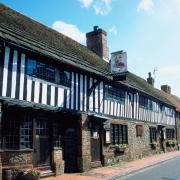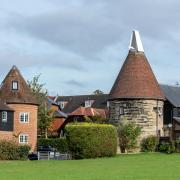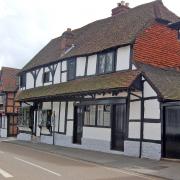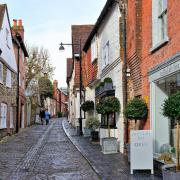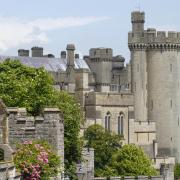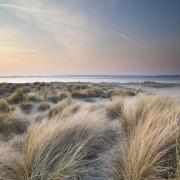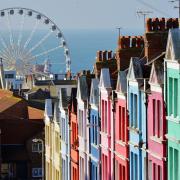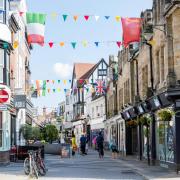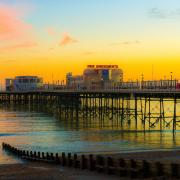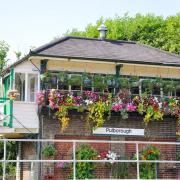After months of constrained freedom, we have never valued our outdoor spaces more. As we celebrate ten years of Britain’s youngest National Park, what impact has the designation made?

They have been called Britain’s green lungs, offering breathing space in our complex lives. And as we look to catch up with outdoor recreation after so long under constraint, our National Parks have never been more important.
The diversity of Britain’s 15 National Parks is staggering. From the rocky harshness of the Cairngorms in Scotland, through the more tempered, grassy fells of the Yorkshire Dales, to the mellow, lush wetlands of the Norfolk and Suffolk Broads, these stunning landscapes are national treasures. And now the National Park family is celebrating the tenth birthday of its youngest member, the South Downs National Park.
There can be few people in Sussex who are not familiar with our own National Park but it is worth reminding ourselves just what makes it so special. The heathland and wooded ridges of the Western Weald, the pristine cliffs of the Seven Sisters and, of course, the signature great green rampart of the Downs themselves combine to represent quintessential England surely more than anywhere else and make this National Park easily the best. At least in our eyes.
And look within these broad-brushed landscapes and you will uncover a host of finer jewels that make the South Downs worthy of National Park status. The underlying geology and varied microclimates have given rise to a mosaic of habitats teeming with interesting animals and plants, including farmland birds such as skylarks and yellowhammers, Adonis blue and chalkhill blue butterflies, an array of colourful orchids and, of course, the Pride of Sussex itself, the round-headed rampion. There are postcard villages, including Amberley and Alfriston, well-preserved historical features ranging from Iron Age hill forts to Saxon and Norman churches, and fantastic opportunities for walking, cycling and horse riding.

If the South Downs is a new kid on the National Park block, then the great-grandfather of them all has to be Yellowstone in the United States. Designated in 1872, it was the first National Park in the world and grew out of growing conservation concern as the American West was rapidly colonised and developed.
American National Parks though are areas of true natural wilderness, by and large publicly owned and managed. People are very subservient to nature. The British National Parks are substantially different. After thousands of years of human integration into the landscape here, the UK lacks any significant areas of wilderness. People are almost everywhere. And also, our own National Parks often exist in their cherished state because of human activity rather than despite it. Patterns of farming, for example, have been crucial.
The South Downs National Park is administered by a National Park Authority charged with conserving and enhancing natural beauty, wildlife and cultural heritage, while promoting opportunities for public enjoyment. But can it do that effectively when, unlike its American ancestors, the South Downs National Park is owned predominantly by private landowners and remains a place where people have their houses and earn their living, sometimes in ways that might seem at loggerheads with conservation? Indeed, the South Downs is the most populated National Park in the country – 117,000 people reside within its boundaries with an additional 2.2 million within ten kilometres. During this birthday year, it is timely to ask whether designation as a National Park has been worth it.
Trevor Beattie is the chief executive of the South Downs National Park Authority, which has 150 staff and spends over £12m each year. Does he think National Park status has made any difference? “If it had not been made a National Park, the South Downs would have remained a breathing space but one under increased pressure from over-development, habitat loss and biodiversity decline and with fewer opportunities for people to go out and enjoy this amazing place,” he says.

“Having National Park status gives immense leverage to have a positive impact on the countryside.”
The National Park Authority is robust about what has been achieved over the past ten years. Nature recovery is right at the top of the list. A heathland restoration project is improving 1,200 football pitches-worth of this scarce habitat for the benefit of threatened smooth snakes, natterjack toads and other reptiles and amphibians. Park staff are also engaging with 125 land managers to help protect traditional chalk grassland, where the Duke of Burgundy butterfly has recovered from the brink of extinction. Meanwhile successful reintroductions of water voles have taken place on the River Meon and new colonies of two now endangered insects – the field cricket and the wart-biter bush cricket – have been established.
Four years ago, the South Downs National Park became an International Dark Sky Reserve, one of only 16 in the world. Stargazing is, weather permitting, guaranteed. And the Secrets of the High Woods Project has logged more than 2,000 sites of archaeological significance, three-quarters of which had never been recorded before.
For visitors, cycle and multi-user paths have been installed or extended, including the Centurion Way between Chichester and Midhurst, which has been used by more than 160,000 people over the past five years. Five new Miles Without Stiles routes have been created for families and people with limited mobility. And more than 20,000 young people have used the National Park Authority’s School Travel Grant to access learning outside.

Not least, £1.75m has been invested in 202 community projects across the National Park, including an outdoor classroom at the conservation site at the old fisheries of Botany Bay near Lavington Park and the opening of a community shop and hub at Fittleworth. This support has drawn on the National Park Authority’s duty to foster the economic and social wellbeing of local communities.
Much would seem to have been done but the National Park Authority is quick to share any accolades it might be due. “If I was to single out one thing that I am particularly proud of over the first ten years it would be the collaboration and camaraderie of all the people and organisations who help care for this wonderful place,” says Trevor.
“Our work has been possible only thanks to local communities, landowners, farmers, partner organisations and volunteers. The passion that people have for this landscape is certainly one of our strongest assets.”
Despite this, not everyone has been a fan of the National Park from the word go. When the National Park was confirmed, the president of the Country Land and Business Association (CLA) was worried excessive planning restrictions might make it difficult for country businesses to operate, saying: “The last thing we want is to see this thriving and busy part of the south east reduced to little more than tea shops and car parks by the dead hand of bureaucracy.”
More recently, an Arun district councillor has called for the National Park Authority to be abolished saying he had “always had a problem” with it. And not all local residents are happy either. One manager of a long-standing tourism attraction and a farmer’s wife says: “We have reaped very few benefits from National Park status. In fact, I believe in certain circumstances it has hindered our ability to diversify and grow our businesses.”
Others would seem to be happy to celebrate the first ten years of the National Park.
Brenda Pollack, south east campaigner for Friends of the Earth, says: “Designating the South Downs as a National Park has been beneficial for both people and the environment, preventing further damage to this special and loved area.”
Philip Buckle of the Sussex Ramblers adds: “The National Park has been a great blessing. It has encouraged many people to get outdoors. My only reservation is that in some areas, the Downs are subject to seasonal overuse.”
And Mark Wester of the British Horse Society says: “Being able to have access to the South Downs National Park has been a fantastic opportunity for both horse riders and cyclists to enjoy safer off-road riding. We have worked in partnership with the National Park Authority to produce a guide about horse riding in the park and how to share routes safely with cyclists and walkers.”
And there has perhaps even been a slight change in tone at the CLA. South east regional surveyor Tim Bamford says: “The South Downs National Park has benefited from learning from older national parks, improving on practices of those longer-established.”
Challenges will certainly always remain in the South Downs as the often competing demands of nature, the economy and recreation are juggled. National Park staff will never have the blanket control enjoyed by their counterparts over at Yellowstone but ten years of the South Downs National Park has shown one thing. With imagination, it is perfectly possible for people and nature to live, and thrive, side by side.








